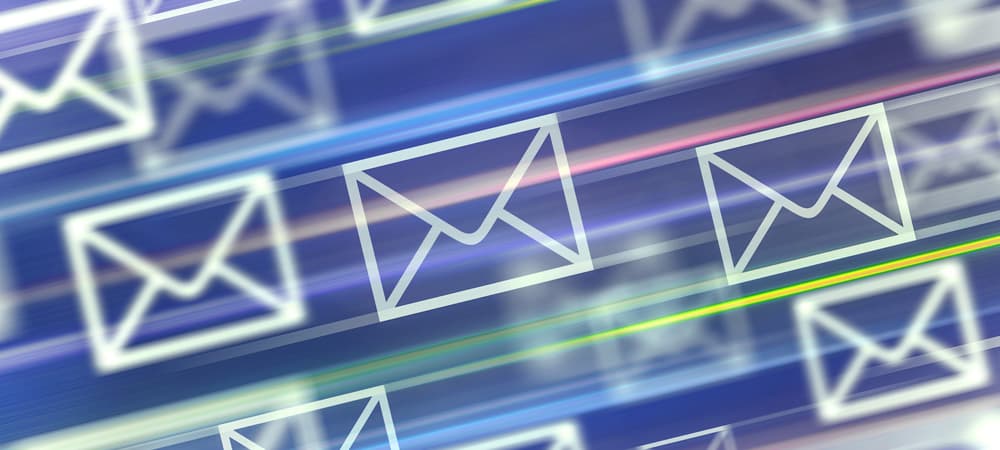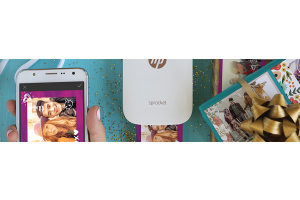We use cookies to offer you a better experience. For more information on how we use cookies you can read our Cookie and Privacy Policy.
8 Types of Emails You Should be Sending
May 14, 2020

Direct mail, social media, and print advertising all serve a purpose, but nothing beats email when it comes to speaking directly to your customers. Whether you’re sending offers tailored specifically to previous purchases, or simply reaching out to remind people about your new services, email can be an effective way to develop a dialogue.
Whoever you’re trying to connect with, chances are pretty good they have an email address—and use it. The number of worldwide email users is projected to increase to 4.2 billion by 2022.[1] That’s half of the world’s population! Email is the most popular way for customers to stay in touch with retailers [2] and 99% of consumers check their email at least daily.[3] Email lets you reach customers on the go, via multiple devices. And it’s easy to measure results.
Here are eight types of emails you should be sending to your customers to get the conversation going.
Form submission emails
Also known as kickback emails or thank-you emails, these messages are sent to acknowledge that your user submitted information to your business and provide them with information related to it. Kickback emails generate twice the engagement of dedicated marketing emails,[4] so it pays to make them look good.
Examples: After a user downloads a PDF from your site, it’s good practice to send them an email that has a link to that PDF so they don’t lose it. Or if a customer makes a purchase, send a “thank you” email that confirms the details of the order.
Welcome emails
The most prominent type of kickback email is the welcome email. Think of these as the start of a beautiful relationship: A new customer has expressed interest in your company, and you want to make a good first impression. Use human, friendly language that sounds like you’re talking to a new friend.
Examples: After a user submits an email to your company site, your first contact via email will ask your user to confirm their email address. Keep it short, sweet and include a big call-to-action. Once users confirm their address, send a second email that thanks them and outlines ways your business can help them out.
Promotional emails
These are regularly-scheduled emails that are sent to all your users or a major segment. Get creative with these and consider including a coupon or other incentive that you can feature in the subject line.
Examples: Weekly sales or special offers highlighting different aspects of your business. It’s easy to slip into marketing-speak in promo emails; think of ways to surprise and delight your users so the emails don’t get repetitive.
Dedicated emails
They may not be part of your usual campaigns, but dedicated emails (casually known as one-off emails) should look just as good and be just as relevant to your audience. They’re meant to highlight something specific that’s going on with your business, so feel free to break out of your usual template designs and do something special.
Examples: Most dedicated emails are one-time promotions, but they can be anything new that’s going on with your business, from a party invitation to announcing a new product.
Lead nurturing emails
Here’s where you start segmenting your audience. Use business intelligence to track the distinct patterns of customers and try to target their interests. Think of these as “helper” emails—simple, friendly ways to guide a customer towards something they’ll probably like.
Examples: Lead-nurturing emails can be automated (such as recommending similar items after a user makes a purchase) or very personalized (like a note from a sales rep tailored to an individual customer’s needs).
Newsletter emails
Content marketing is a great way to build brand awareness and interest, and an email newsletter is an easy way to showcase it.
Examples: Newsletters can be standalone pieces of content marketing, or they can promote blogs, social media, or other content you’re creating.
Transactional emails
Transactional emails should offer clear and concise knowledge about the user’s recent activity or purchase. They should not have a marketing vibe because they have to adhere to the specific guidelines outlined in the Federal Trade Commission’s CAN-SPAM Act, which strictly regulates how you communicate with customers who may have opted out of your marketing email list.
Examples: Order confirmations, shipping confirmations, and receipts that a customer’s credit card has been charged are a few common ones. You may have a few that are specific to your business as well.
Co-marketing emails
This is when you join forces with another brand to offer something special to both your customer bases. When it’s a good match, everyone wins—you’re giving your current customers something extra, and you’re also reaching a group of potential new ones as well.
Examples: This can be anything from a contest to a special offer on both companies’ products. Carefully consider if a potential partnership is a good fit that your customers will appreciate.
There are many more email tactics you can take, from thought leadership emails that make you look like experts in your field, to polished internal emails that create a dialogue with your own employees, to name a couple. Whatever your email suite ends up looking like, make sure your messages are ones that will resonate with your customers—and keep them from hitting the opt-out button.
Learn about more effective ways to communicate with your customers
3 Social Networks Designed for Business
6 Ways To Kill It With Creative Commons
Building a Big-Business CSR Strategy
[2] eMarketer, Deals Drive Greater Engagement on Shoppers' Favorite Brand Communication Channel: Email
[3] Hubspot Blogs, The Ultimate List of Email Marketing Stats for 2020
[4] HubSpot Blogs, Why Thank-You Emails Are the Untapped Gold Mine of Email Marketing






